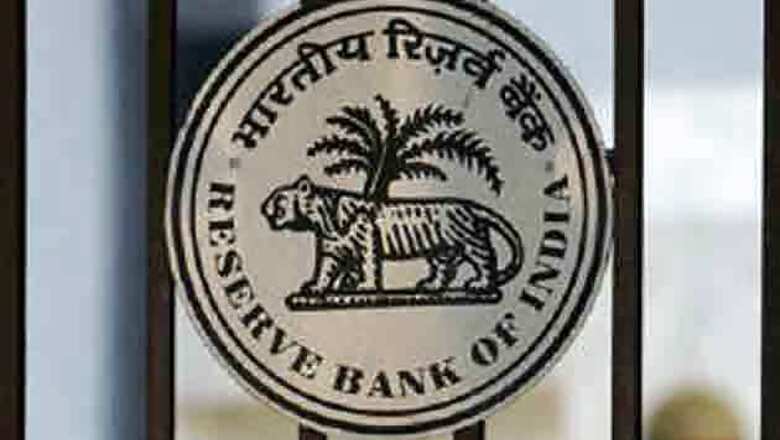
views
Mumbai: Indian bond yields rose, while the rupee and stocks remained under pressure after Standard & Poor's cut India's outlook, with traders predicting pressure on the central bank to step in to prevent further falls in markets.
Indian markets have already been battered in recent weeks by the issues spotlighted by S&P in downgrading the country's outlook to negative, with the rupee recently at three-and-half-month lows, and bond yields near their December 2011 highs.
That explained the relatively muted falls on Wednesday, after initially bigger knee jerk reactions, as S&P cited well-flagged market risks such as India's widening current account and fiscal deficits, a slowdown in reforms, and the weaker economic outlook.
On top of all these challenges, uncertainty about the taxation of foreign investors has most recently raised fears about slowing capital inflows.
Traders said that markets would continue their recent falls unless the Reserve Bank of India steps in with debt purchases or by intervening in the currency markets, though the central bank may not be in a position to act decisively.
"Since S&P was doing an assessment, this was not quite unexpected. This puts the probability of an actual rating cut on the horizon. If that event happens, it will have a big impact on foreign fund flows," said Sandeep Bagla, senior vice president of ICICI Securities Primary Dealership.
"If the RBI supports the market, yields may move to 8.50 per cent. Otherwise, they may go up to 8.75 per cent in the near term.
S&P officials had a much publicised meeting with Indian Finance Ministry officials earlier this month, which had sparked speculation about a potential cut in the outlook.
India's 10-year bond yield rose as much as 8 basis points to 8.65 per cent on the day, not far from the levels above 8.70 per cent hit in December, before closing at 8.63 per cent.
The country's main stock indexes also fell, with the BSE Sensex ending down 0.3 percent.
The rupee fell to as low as 52.745 against the dollar, before recovering to 52.54/5500.
Still, traders expect the local currency to soon resume its falls towards the record low of 54.30 hit in December.
"The ratings news combined with potential tax changes for foreign investors is a potentially potent mix for INR. A re-visit to the 2011 highs in USD/INR can't be ruled out," said Jonathan Cavenagh, an FX strategist for Westpac in Singapore.
"The RBI can help sway that sentiment but in the current environment it may well struggle to cap gains in the pair," he also said, adding his own target for USD/INR is at 53.50.
Whether the central bank can intervene is in doubt.
A key risk remains India's acute liquidity shortage, as shown by the surge in repo borrowings from the central bank, which has regularly surpassed 1 trillion rupees - well above RBI's comfort levels.
Any dollar sales would just exacerbate that situation, while
the government has a heavy borrowing program of 3.7 trillion rupees via bonds in the fiscal first half, further draining liquidity from markets.
Consequently, the OIS curve remains inverted. India's 5-year swap rate rose 6 basis points to 7.66 per cent after hitting as high as 7.71 per cent, the highest since July.
Meanwhile, 1-year swap rate gained 2 basis points to 7.98 per cent after earlier hitting three-week highs.
India's inter-bank call rate was perched at 8.40/8.45 per cent, higher than Tuesday's close of 8.35/8.40 per cent, and the repo rate of 8.00 per cent.

















Comments
0 comment